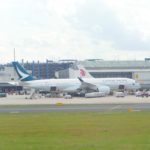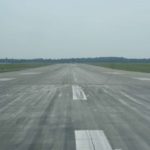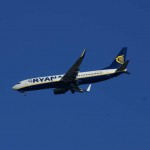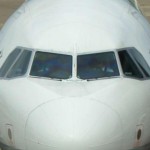Boeing [NYSE: BA] and FedEx have jointly initiated an in-service evaluation of active radio frequency identification (RFID) tags on some major airplane parts for a FedEx MD-10 Freighter.
SEATTLE – „The RFID technology is designed to help airlines reduce ownership costs by managing repairs and tracking assets,“ said Kenneth Porad, RFID program manager for Boeing Commercial Airplanes. „On-airplane use of active RFID technology is making history and setting the stage for wireless sensor networks in the future.“
Similar to a bar code, RFID is an automated identification and data collection technology that uses radio frequency waves to transfer data between a reader and items that have RFID devices affixed. RFID offers significant advantages over other types of identification, specifically, no line-of-sight requirement and a dynamic read/write capability. These tags store data such as part and serial numbers, manufacturer codes, date of installation and country of origin. In addition, the tags can also store maintenance data so airlines can better understand the consumption of parts to ensure adequate inventories are on hand.
The active tags — created by IDENTEC SOLUTIONS — are battery powered and contain a microchip and transmitter that operate at 915 MHz, an internationally recognized standard frequency. The read-range capability of these active tags is 300 feet compared to the 10-foot read range of passive tags. Active tags also operate more quickly and provide more storage memory than passive tags. They provide the ability to inventory an aircraft without opening access doors.
The duration of the in-service evaluation is 120 days (until September 15, 2006). Forty installed tags will transmit a signal every three seconds for the first 90 days. Following the 90 days, 10 additional tags with 8 kilobytes of read/write memory will be read and encoded with data for 30 days. During this last 30 days of the test, FedEx mechanics will use a portable data terminal to read and write inspection data to the tags during scheduled visits to its Memphis, Tenn., base.
„We’re hoping RFID can improve parts visibility and parts lifecycle visibility,“ said James Ford, manager of engineering support for FedEx. „The aircraft records department keeps track of hundreds of parts, and if we could throw RFID tags on those parts, it would reduce the workload significantly.“
The tags have been installed in all zones of the airplane including the flight deck, avionics compartment, cargo compartment and wheel wells. The testing phase will also identify potential electromagnetic interference and detrimental environmental effects.
The IDENTEC SOLUTIONS active tags transmit less than 1 milliwatt of power. By comparison, a cell phone transmits 500 milliwatts. “It’s key to keep the power levels of these tags in perspective — cell phones and laptops emit a great deal more power,” said Ken Porad. “These tags are very safe for use on an airplane.”
Following the test, Boeing will work with the U.S. Federal Aviation Administration to certify that active RFID devices do not adversely affect the operation of any aircraft systems or interfere with continued safety of flight. Use of these tags will benefit the airline industry by improving parts traceability and parts lifecycle management.





